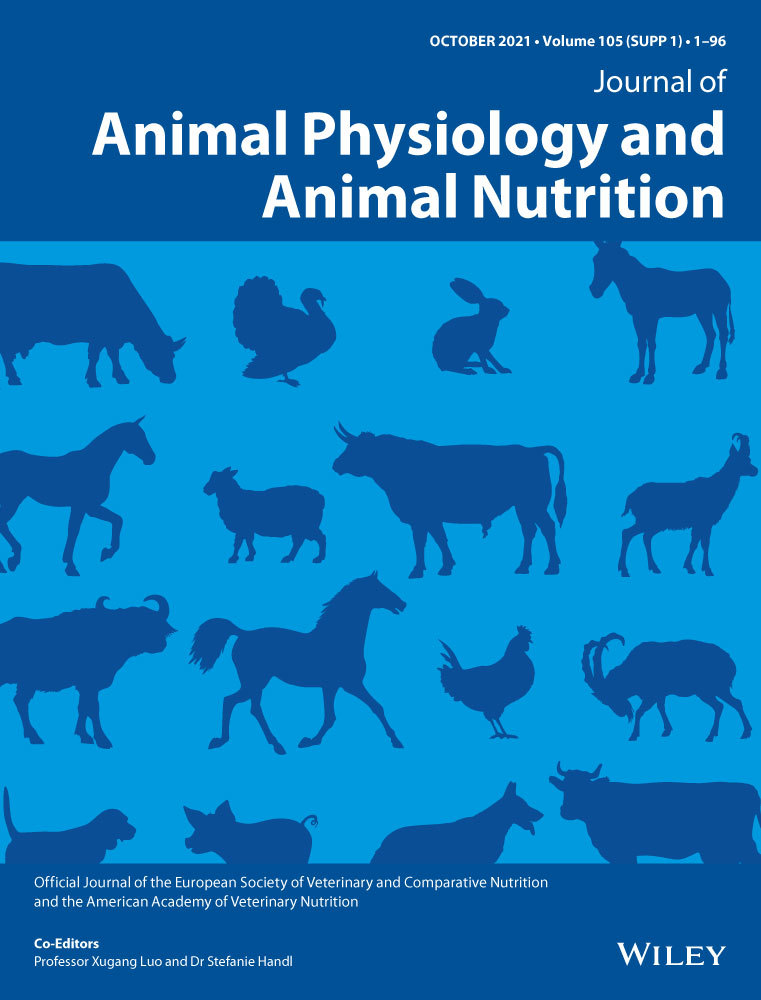Ver ítem
- xmlui.general.dspace_homeCentros Regionales y EEAsCentro Regional CórdobaEEA Marcos JuárezArtículos científicosxmlui.ArtifactBrowser.ItemViewer.trail
- Inicio
- Centros Regionales y EEAs
- Centro Regional Córdoba
- EEA Marcos Juárez
- Artículos científicos
- Ver ítem
Ruminal effects of excessive dietary sulphur in feedlot cattle
Resumen
Sulphur (S) dietary excess can limit productive performance and increase polioencephalomalacia (PEM) incidence in feedlot cattle (FC). Sulphur excess ingested is transformed to hydrogen sulphide (H2S) by sulfo-reducing ruminal bacteria (SRB), being high ruminal H2S concentration responsible for aforementioned damages. As the ruminal mechanisms involved in H2S concentrations increase have not been elucidated, this study aimed to evaluate the ruminal
[ver mas...]
Sulphur (S) dietary excess can limit productive performance and increase polioencephalomalacia (PEM) incidence in feedlot cattle (FC). Sulphur excess ingested is transformed to hydrogen sulphide (H2S) by sulfo-reducing ruminal bacteria (SRB), being high ruminal H2S concentration responsible for aforementioned damages. As the ruminal mechanisms involved in H2S concentrations increase have not been elucidated, this study aimed to evaluate the ruminal environment, and the association between ruminal H2S and dissimilatory SRB (DSRB) concentration in FC experimentally subjected to S dietary excess. Twelve crossbred steers were randomly assigned to one of two dietary S levels (6 animals per treatment): low (LS, 0.19% S) and high (HS, 0.39% S obtained by sodium sulfate inclusion at 0.86%). The study lasted 38 days, and on days 0, 22 and 38, ruminal gas samples were taken to quantify H2S concentration, and ruminal fluid to determine total bacteria, DSRB, protozoa, volatile fatty acid and ammonia nitrogen concentration. For ruminal H2S concentration, S dietary × sampling day interaction was significant (p < 0.001), so that the greater concentration was observed on days 22 and 38 with the HS diet. The remaining ruminal parameters were not affected by dietary S level, and no significant correlation between H2S and DSRB concentrations was observed. The ruminal adaptation that maximizes H2S production in FC consuming S excess does not seem to be associated with biological or biochemical alterations, nor DSRB concentration changes. The microbial diversity and ruminal environment were resilient to the S excess evaluated, suggesting that 0.39% of dietary S achieved by 0.86% sodium sulfate addition, could be used without disturbances on digestion nor health of FC.
[Cerrar]

Fuente
Journal of Animal Physiology and Animal Nutrition (First published: 27 October 2021)
Fecha
2021-10-27
Editorial
Wiley
ISSN
1439-0396
Formato
pdf
Tipo de documento
artículo
Palabras Claves
Derechos de acceso
Restringido
 Excepto donde se diga explicitamente, este item se publica bajo la siguiente descripción: Creative Commons Attribution-NonCommercial-ShareAlike 2.5 Unported (CC BY-NC-SA 2.5)
Excepto donde se diga explicitamente, este item se publica bajo la siguiente descripción: Creative Commons Attribution-NonCommercial-ShareAlike 2.5 Unported (CC BY-NC-SA 2.5)

